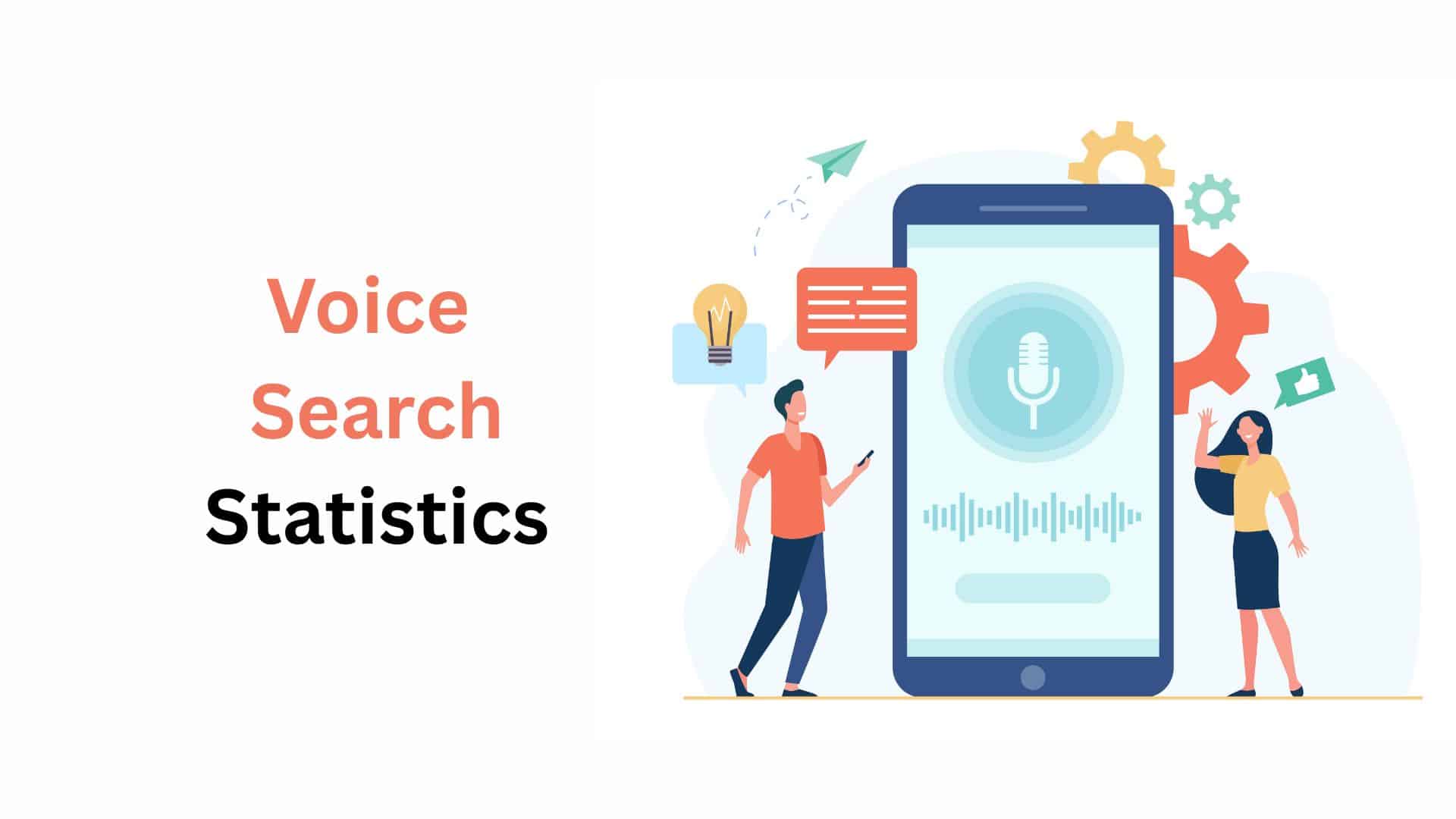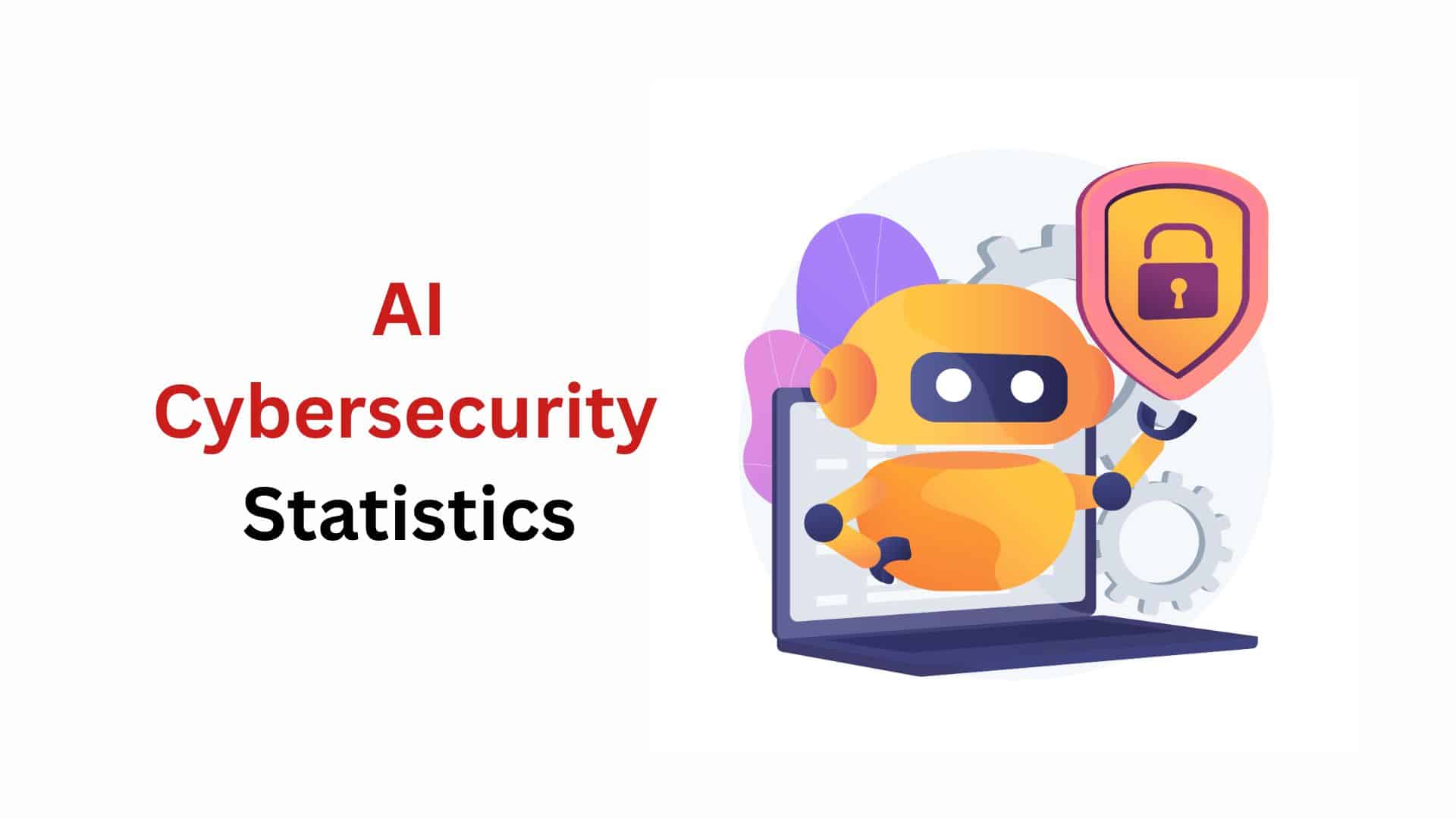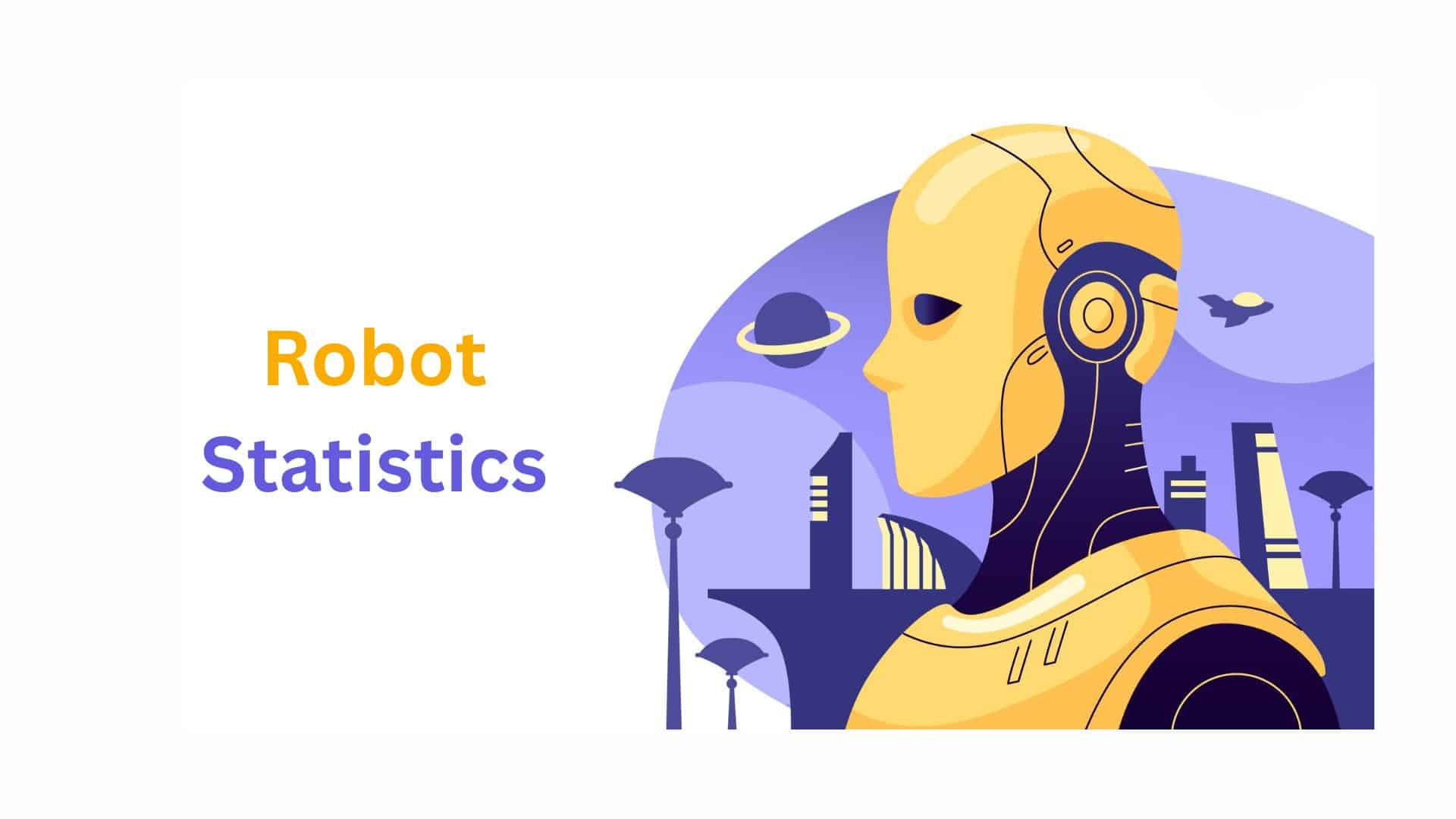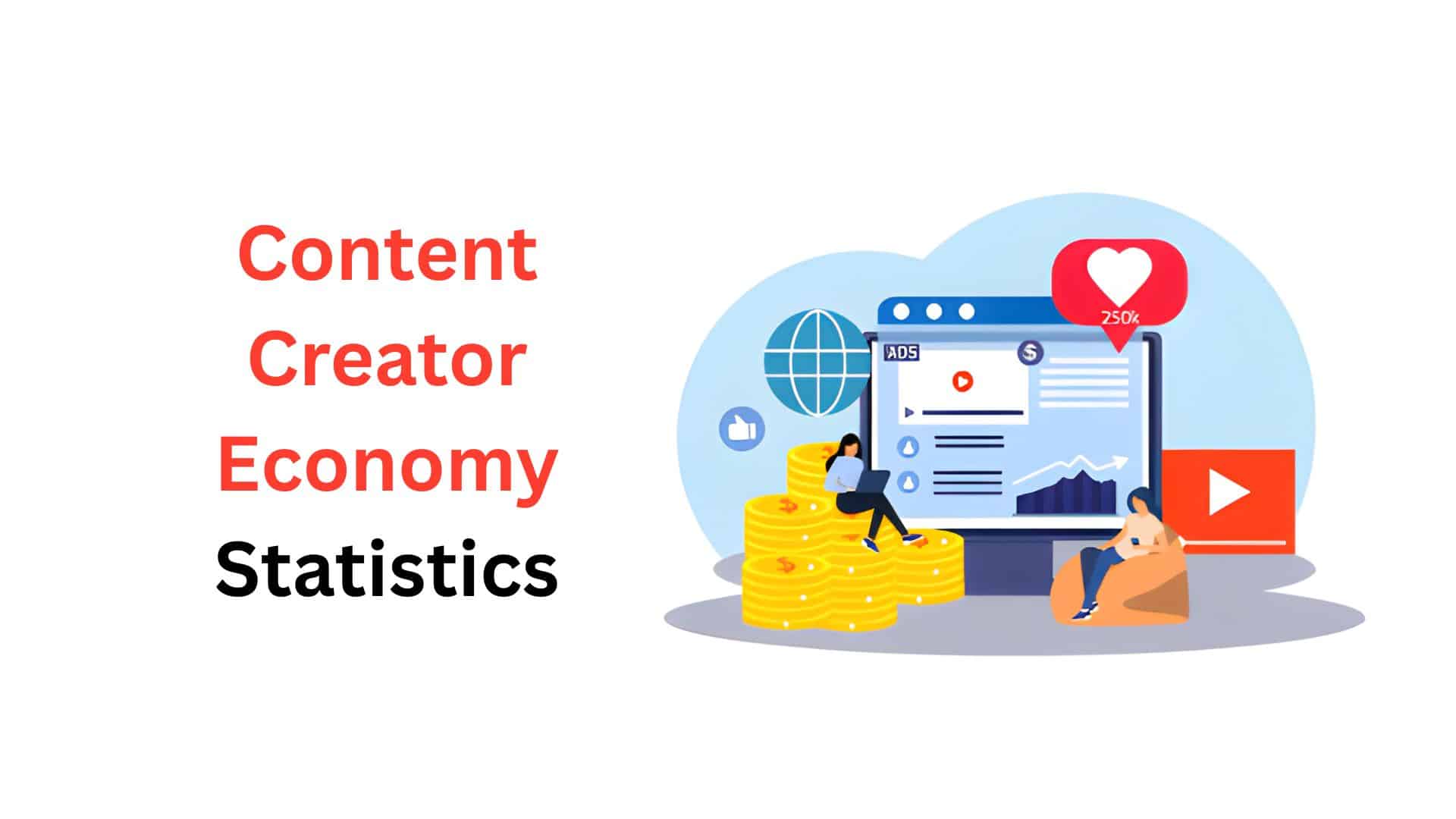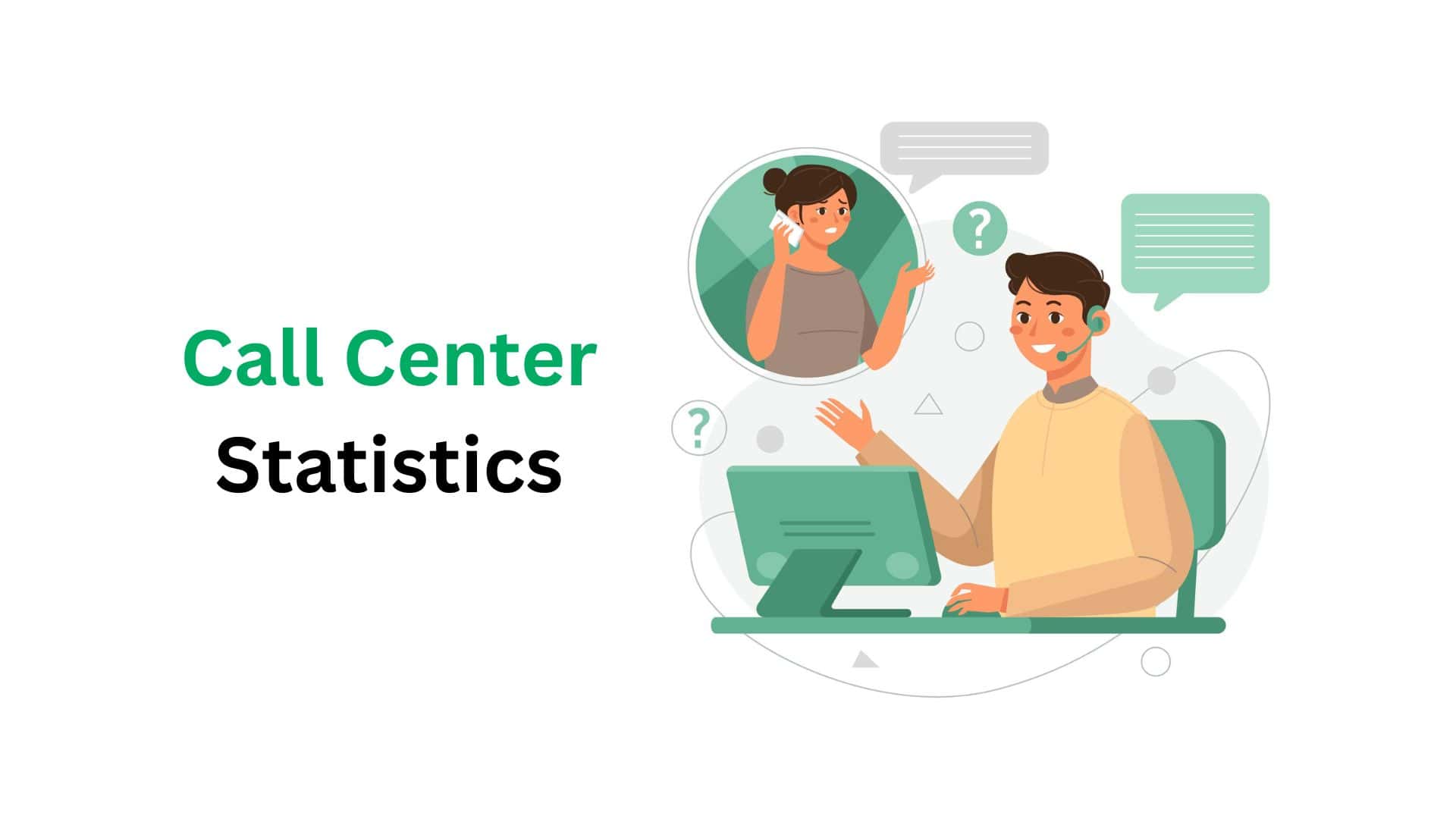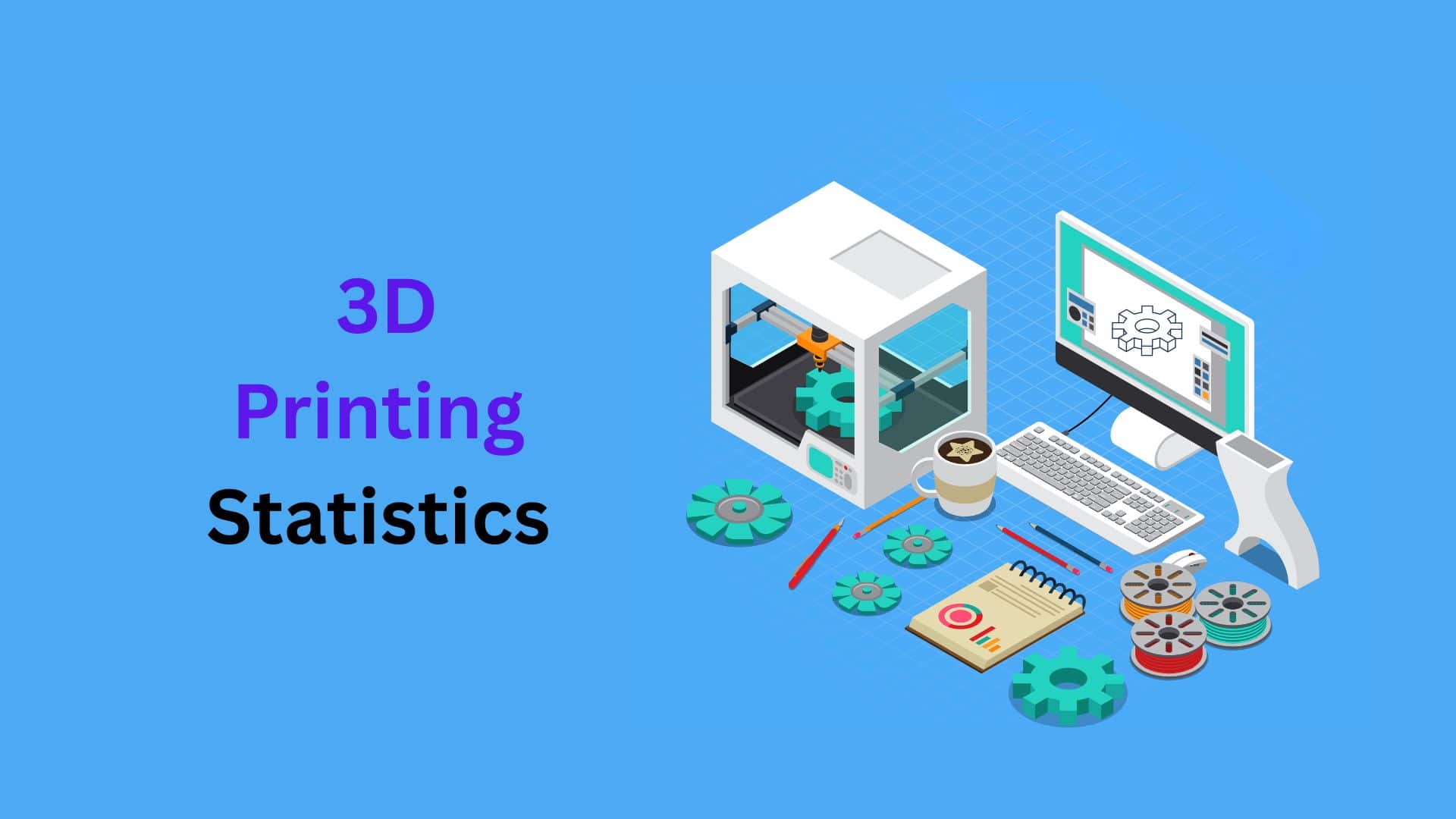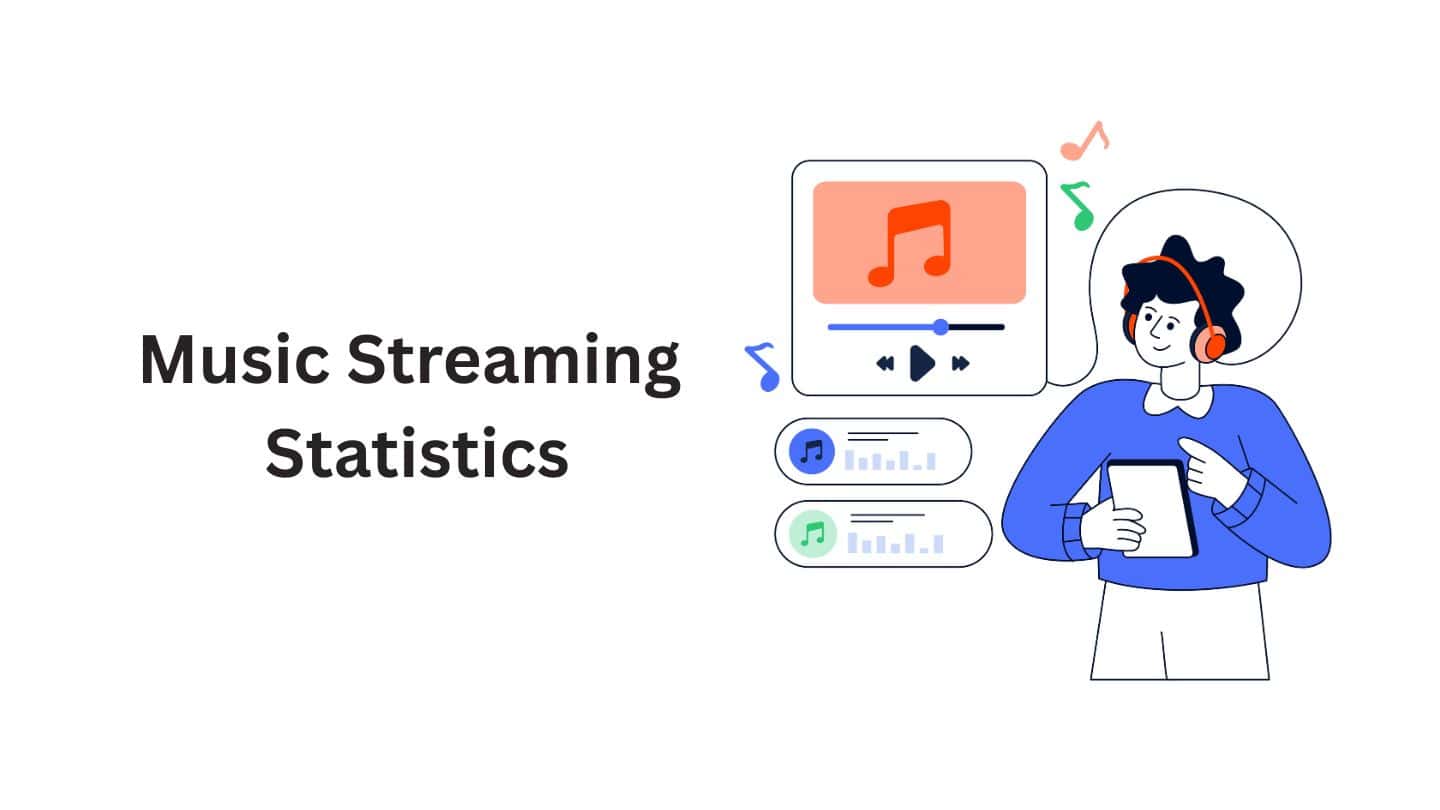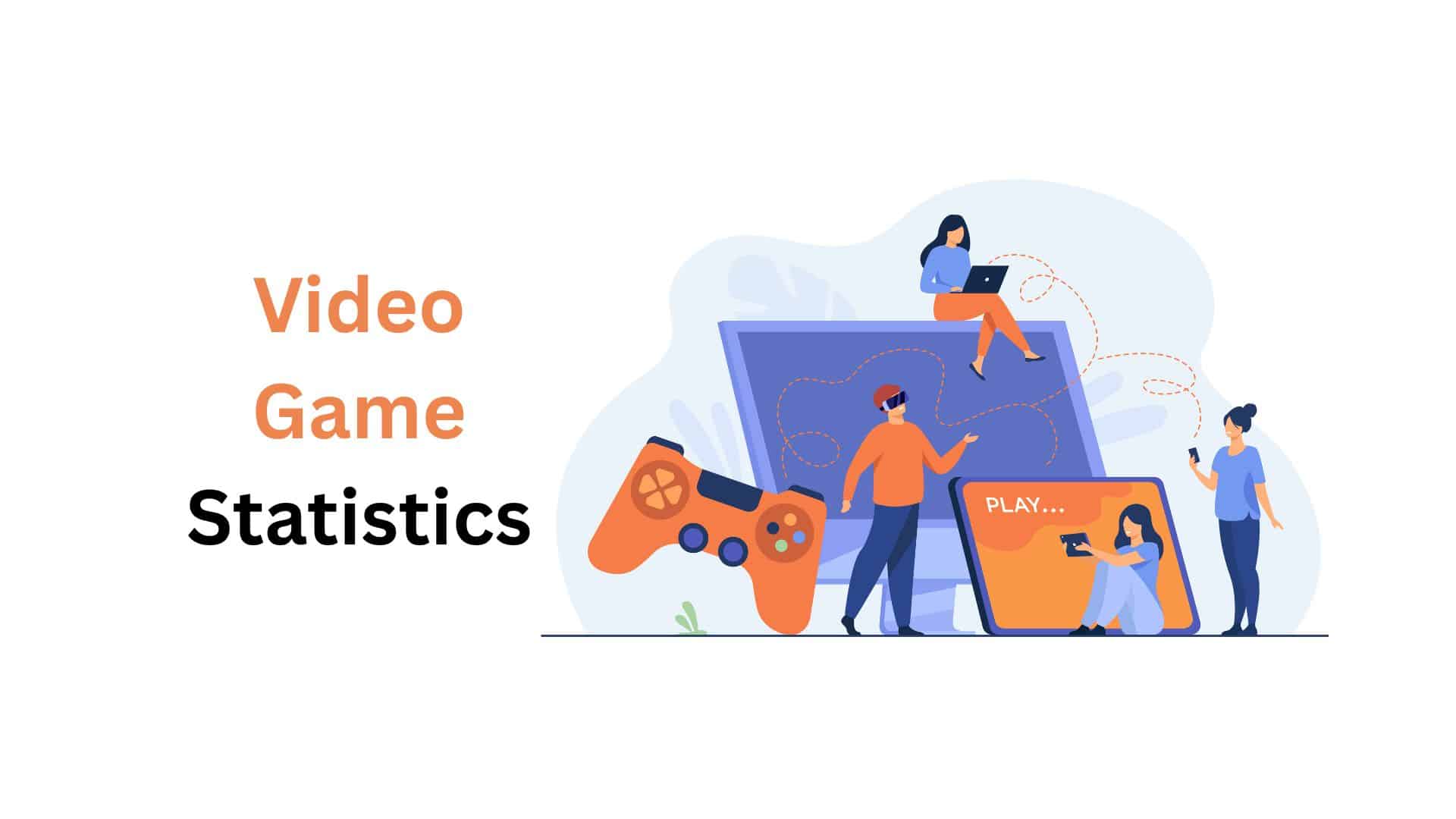AI Agents Statistics By Usage, Market Size and Facts (2025)

Updated · Oct 20, 2025

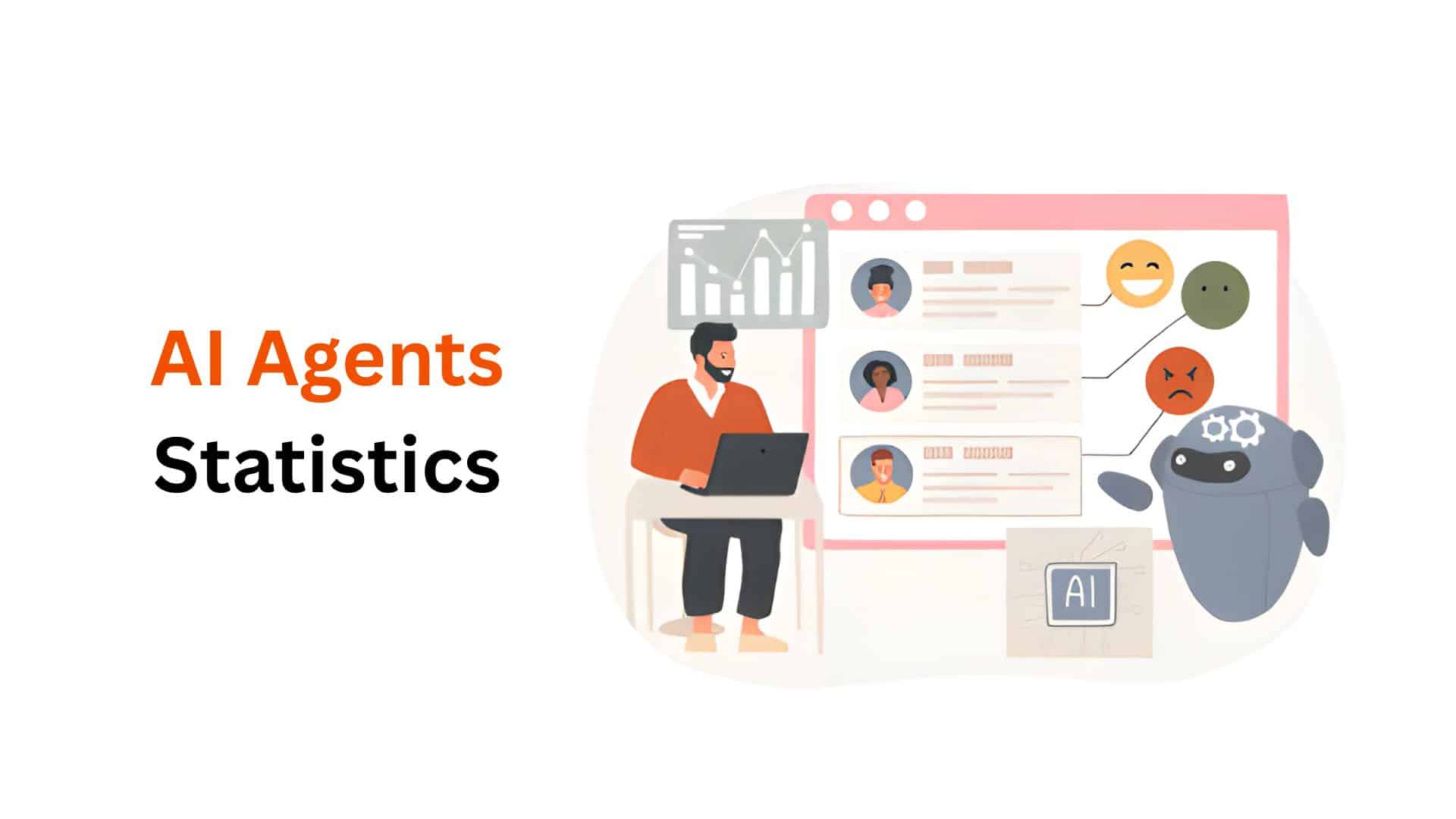
WHAT WE HAVE ON THIS PAGE
- Introduction
- Editor’s Choice
- The Genesis of AI Agents – Timeline
- AI Agents Market Size
- Regional AI Agents Market Revenue
- Enterprise Adoption Statistics
- The Economic Impact- Cost Reduction and Productivity Gains
- Industry Deep Dive
- AI Agents in Customer Service Statistics
- AI Agent ROI and Cost Efficiency Statistics
- AI Agents + Human Agents
- AI Agents and Customer Preferences Statistics
- Consumer Adoption of AI Agents in Online Shopping
- AI Agents in eCommerce Statistics
- AI Agents in Finance Statistics
- Consumer Adoption and The Human Element
- AI Agents in Fortune 500 Companies
- Conclusion
Introduction
AI Agents Statistics: Today, we’ve entered the age of the AI Agent, where large-scale, autonomous software entities learn, reason, and act to achieve complex goals, often without human intervention. Businesses are no longer just considering AI; they are deploying entire digital workforces of AI Agents. This isn’t just another trend in the tech environment; it’s a massive, measurable economic force, and these data are truly impressive.
So, I’d like to use your time discussing more of these agents in this AI agents statistics discussion on their origin, timeline, growth, userbase, and future anticipations. Let’s get started.
Editor’s Choice
- The global AI Agents market is forecast to surge from a $5.40 billion valuation in 2024 to $47.1 billion by 2030, reflecting an aggressive Compound Annual Growth Rate (CAGR) of 8%.
- 85% of global enterprises are expected to have implemented or significantly integrated AI Agents into their core workflows by the close of 2025.
- Businesses utilizing AI Agents report an average operational cost reduction of 35% and a corresponding efficiency boost of 55% across automated tasks.
- In the financial services sector, specialized AI Agents have helped institutions improve their fraudulent transaction detection rates by a significant 40%.
- Virtual AI Agents in healthcare can now autonomously manage up to 95% of all routine patient inquiries, thereby freeing up scarce human medical professionals.
- A substantial 99% of developers currently involved in AI are actively engaged in exploring or building new AI Agents and agentic applications.
- 51% of consumers now explicitly prefer interacting with an AI Agent over a human representative when they require immediate, 24/7 service or resolution.
- The Code Generation segment of AI Agent roles is projected to exhibit an aggressive CAGR of 2%, positioning it as the fastest-growing application role.
The Genesis of AI Agents – Timeline
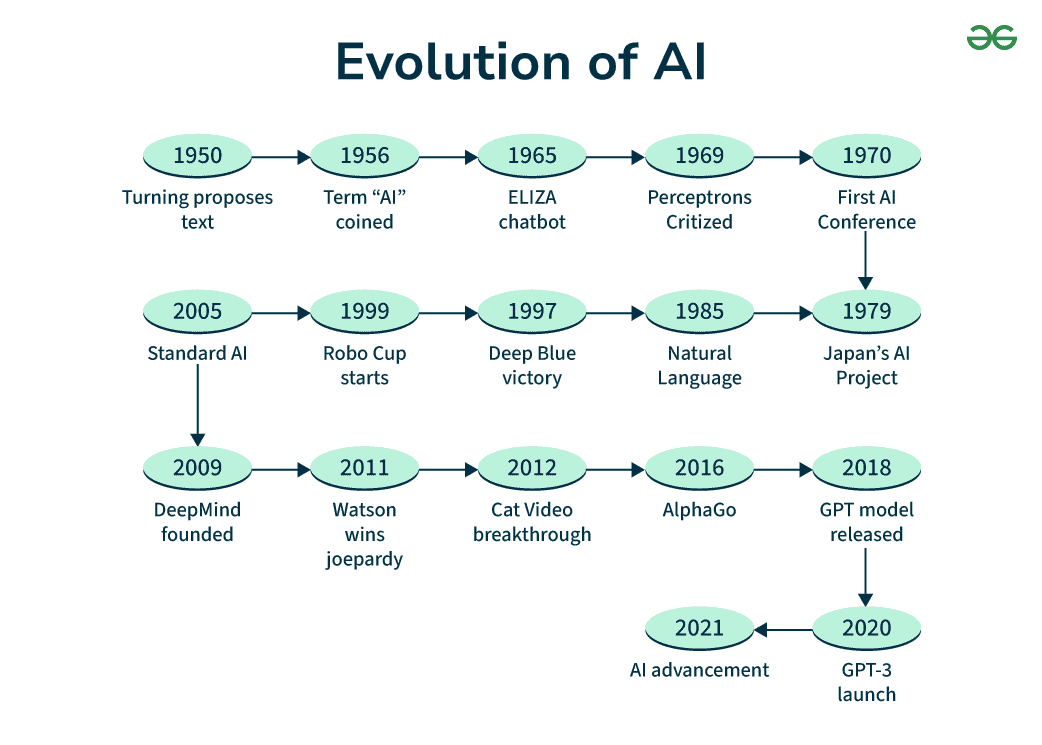
- 1956: The Dartmouth Workshop marked the official birth of Artificial Intelligence as a field, setting the stage for all future agent work.
- 1966: The Birth of ELIZA introduced the world to the first “chatterbot,” demonstrating a rudimentary form of a conversational AI Agent using simple pattern matching.
- This pioneering system managed to convince roughly 35% of early users that it was human, highlighting the initial deceptive power of basic AI.
- 1997: IBM’s Deep Blue defeating chess world champion Garry Kasparov demonstrated a highly specialized, goal-oriented agent’s ability to master a complex domain.
- 2017: The Transformer Architecture emerged, the key development behind Large Language Models (LLMs), which power modern AI Agents.
- 2023-2025: Agentic AI Systems began to hit the market, allowing the creation of multi-step, autonomous workflows, moving past simple chat.
- The venture capital community responded immediately, with funding for early-stage AI Agent startups tripling in 2024 compared to the prior year, validating their commercial viability.
| Founding Event | The Dartmouth Workshop (1956) is universally credited as the field’s official start. |
| Early User Deception |
ELIZA (1966) managed to trick approximately 35% of people into believing it was a human. |
|
LLM Foundation |
The Transformer paper (2017) has been cited over 130,000 times, driving current AI Agent capability. |
| VC Investment Surge |
Funding for AI Agent startups tripled in 2024, confirming market confidence in the agent model. |
AI Agents Market Size
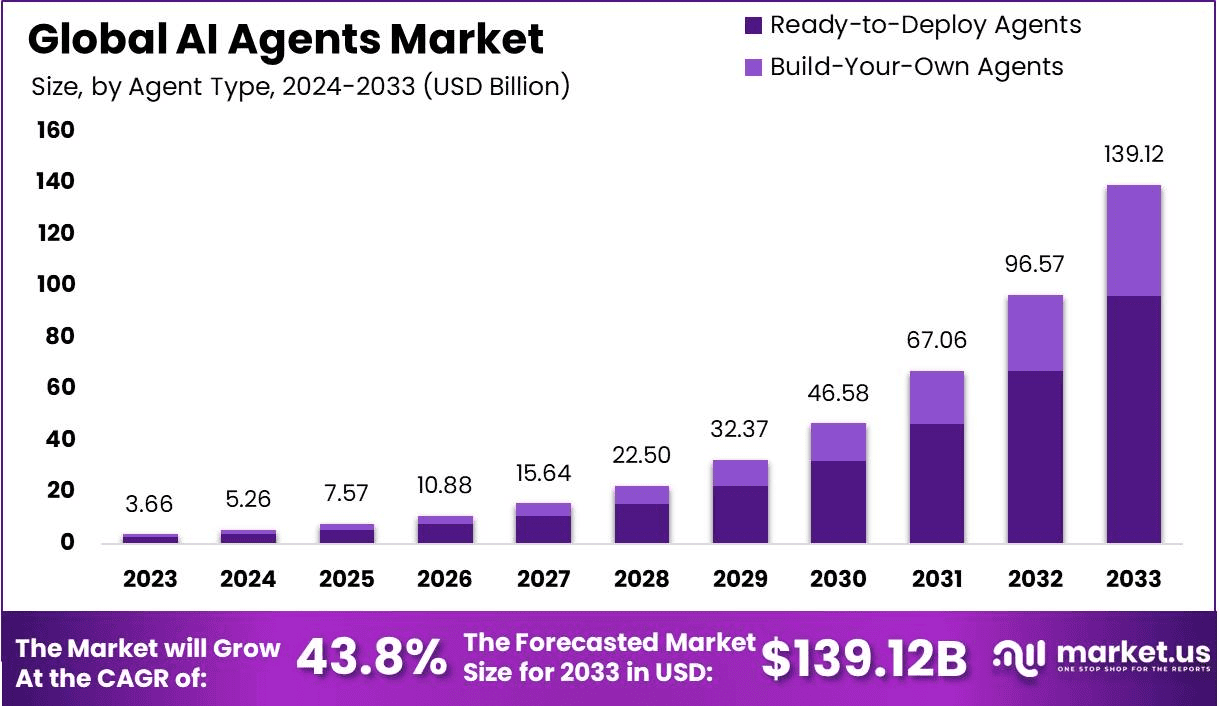
- According to Market.us, the global AI Agents Market is projected to grow from USD 3.66 billion in 2023 to around USD 139.12 billion by 2033, reflecting a strong annual growth rate of 43.88% during 2024–2033.
- In 2023, North America led the market, securing more than 37.92% of the total share, which translated into nearly USD 1.3 billion in revenue, driven by large-scale enterprise adoption and advanced digital infrastructure.
- As per Experro, around 65% of online retailers have connected AI agents with CRM systems to enhance customer support efficiency, which resulted in a 20–30% increase in online sales through more personalized recommendations.
- Nearly 70% of digital shoppers, particularly from the Gen Z demographic, prefer AI agents for instant responses, helping brands create faster and smoother shopping experiences.
- Generative AI integration has reduced cart abandonment rates by 25%, while 62% of eCommerce companies have recorded improved customer satisfaction levels after deploying AI-driven support tools.
- Based on Plivo data, 85% of enterprises are now using AI in their operations, and 63% of major organizations plan to expand their cloud budgets by more than 6% to support AI initiatives.
- By 2025, approximately 80% of companies are expected to rely on AI chatbots for customer interactions, and nearly 78% already apply AI in at least one business function.
- It is estimated that by 2029, AI agents will independently resolve up to 80% of routine customer queries, reflecting their growing intelligence and reliability in automation.
- According to Salesforce, 54% of consumers prioritize quick and effective problem-solving over how they interact with a company, showing openness toward AI-driven service models.
- Nearly 39% of users feel comfortable with AI agents managing basic tasks such as scheduling appointments, reflecting growing consumer trust in automated solutions.
- Around 24% of all consumers, and 32% of Gen Z shoppers, are willing to let AI agents handle their shopping activities, showing increasing comfort with AI-based retail assistance.
- About 34% of customers prefer AI interaction to avoid repetitive exchanges, and 37% appreciate AI-generated personalized content, emphasizing a preference for efficiency and relevance in digital engagement.
- The Ready-to-Deploy Agents category dominated the market in 2023, accounting for over 69.19% of global demand, as businesses increasingly favored plug-and-play AI solutions requiring minimal setup.
- The Single Agent Systems category held more than 73.49% of the total share, reflecting their widespread use in performing targeted business tasks efficiently.
- The Customer Service and Virtual Assistants segment captured over 34.85% of the market, highlighting the crucial role of conversational AI in enhancing client interaction and engagement.
- The Enterprise user base represented more than 58.74% of the market, indicating that most corporations have embraced AI agents to streamline operations and strengthen decision-making.
Regional AI Agents Market Revenue
- In North America, revenue increased steadily from USD 0.47 billion in 2020 to USD 2.00 billion in 2024, supported by rising enterprise adoption of intelligent automation and virtual assistants.
| Region | 2020 | 2021 | 2022 | 2023 | 2024 |
|---|---|---|---|---|---|
| North America | 0.470 | 0.675 | 0.969 | 1.390 | 2.000 |
| Europe | 0.308 | 0.442 | 0.635 | 0.909 | 1.309 |
| Asia-Pacific | 0.364 | 0.524 | 0.754 | 1.087 | 1.566 |
| Latin America | 0.057 | 0.081 | 0.116 | 0.166 | 0.234 |
| Middle East & Africa | 0.038 | 0.054 | 0.077 | 0.113 | 0.157 |
- In Europe, the market expanded from USD 0.31 billion in 2020 to USD 1.31 billion in 2024, reflecting growing investments in conversational AI and digital transformation projects.
- In the Asia-Pacific region, revenue rose from USD 0.36 billion in 2020 to USD 1.57 billion in 2024, driven by rapid technological advancements, large-scale AI integration, and increased digitalization in emerging economies.
- In Latin America, the market grew from USD 0.06 billion in 2020 to USD 0.23 billion in 2024, as businesses began adopting AI-powered tools to improve customer engagement and operational efficiency.
- In the Middle East and Africa, revenue climbed from USD 0.04 billion in 2020 to USD 0.16 billion in 2024, reflecting gradual adoption of AI solutions across banking, telecom, and government sectors.
Enterprise Adoption Statistics
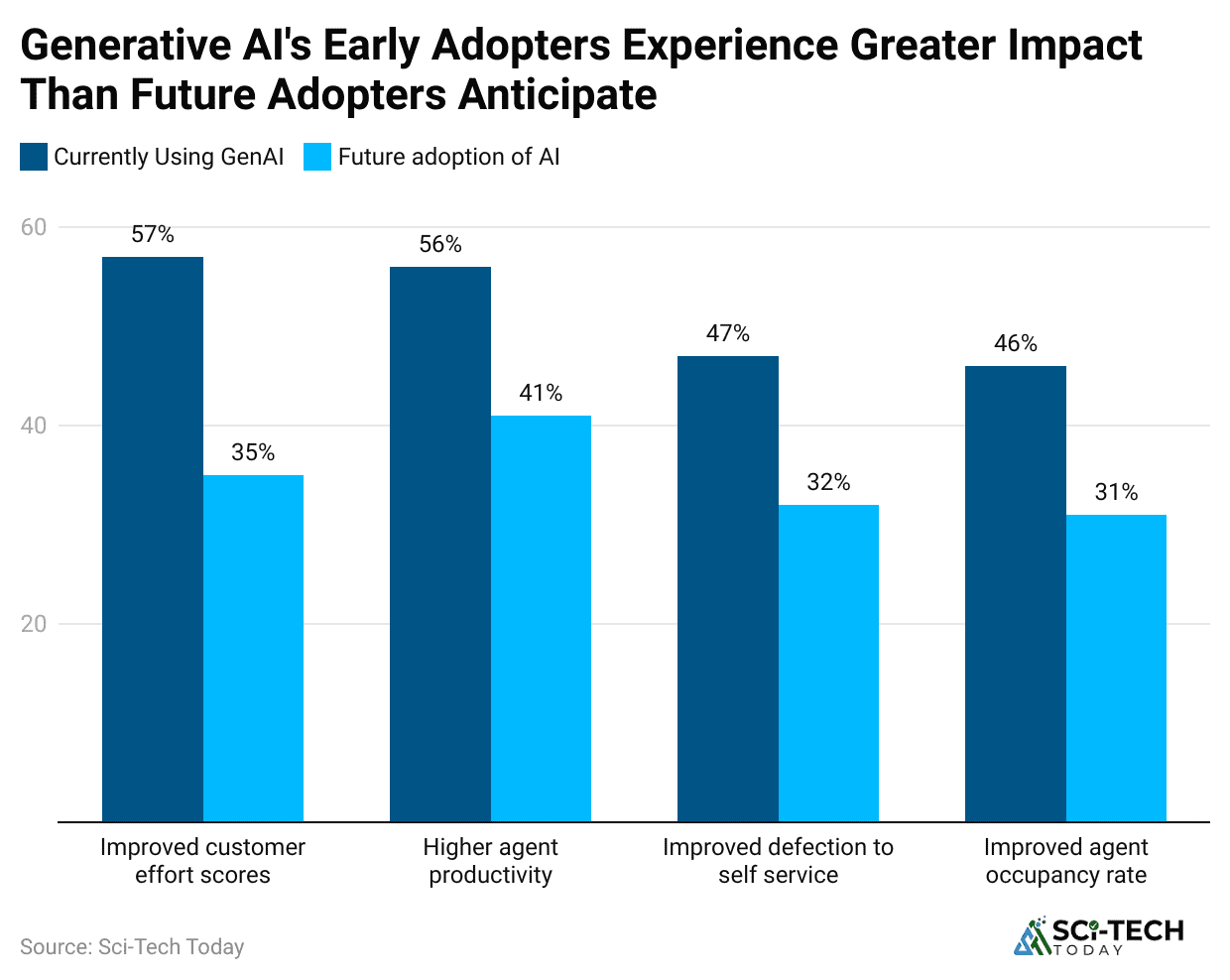
Corporate Integration Statistics
- A remarkable 85% of enterprises are projected to implement or significantly integrate AI Agents into their core business operations by the end of 2025, turning 2025 into the year of mass agent adoption.
- While single-agent systems currently hold a larger market share at approximately 73.5% in 2025, multi-agent systems (MAS), where multiple agents collaborate, are the fastest-growing segment.
- The market currently favors convenience, with Ready-to-Deploy Agents capturing the majority of the market share in 2024.
- According to a July 2024 report, 82% of companies have concrete plans to fully integrate AI Agents into their workflows within the next one to three years.
- This isn’t just for a single task; nearly half of technology leaders, specifically 49%, reported that AI is already “fully integrated” into their company’s core business strategies.
- The drive to create these systems is equally intense at the developer level, with an astonishing 99% of developers involved in AI applications either actively exploring or developing AI Agents.
| Enterprise Adoption Rate | 85% of enterprises are expected to implement AI Agents by the end of 2025. |
| Core Strategy Integration | 49% of tech leaders report AI is “fully integrated” into core business strategy. |
| Customization Growth | The Build-Your-Own Agents segment is slated for significant future growth as companies seek proprietary solutions. |
| Developer Activity | 99% of AI developers are actively exploring or developing AI Agents. |
The Economic Impact- Cost Reduction and Productivity Gains
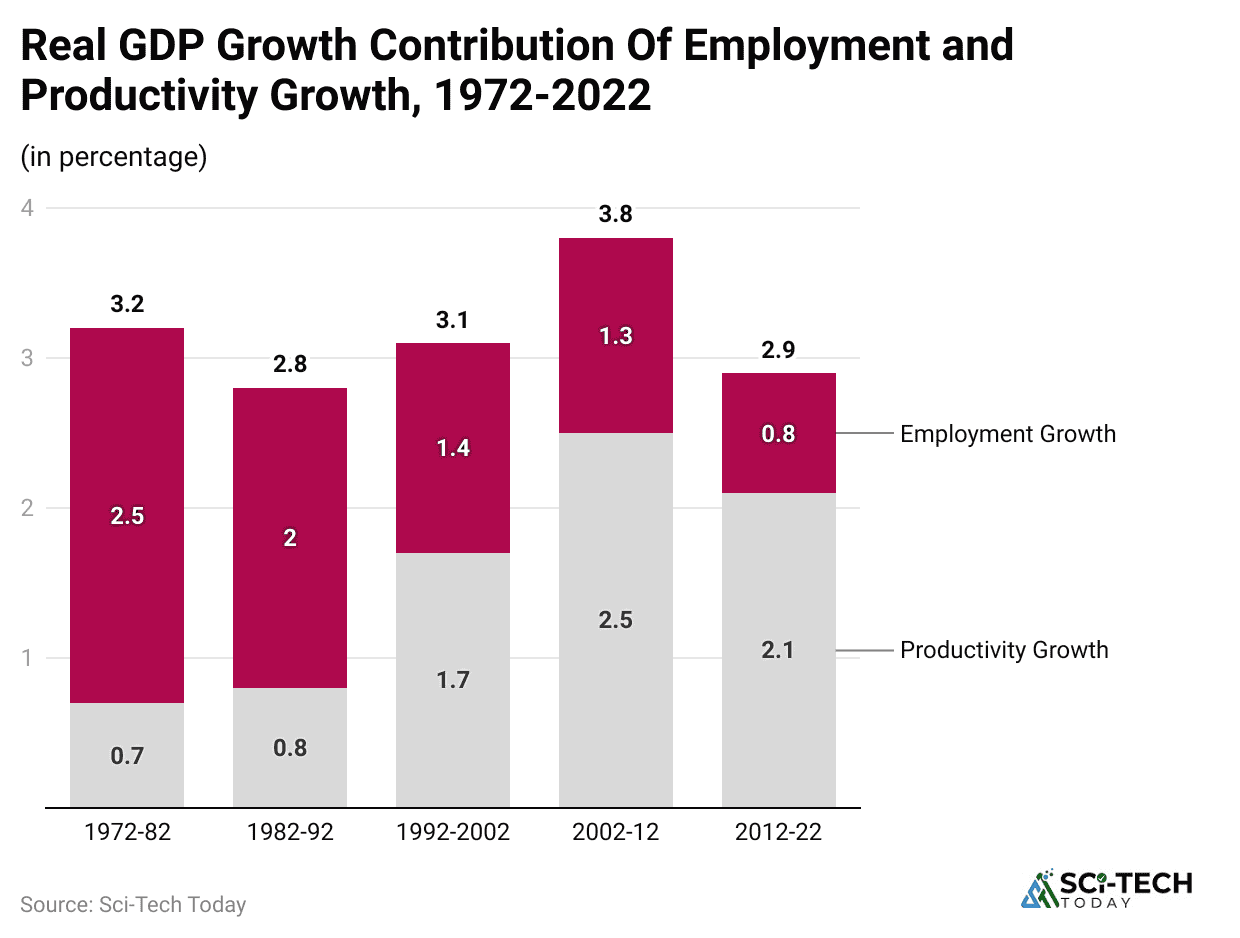
Sector-Specific Financial and Productivity Data
- Companies that are actively utilizing AI Agents are seeing a dramatic reduction in operational costs, with figures showing an average cost saving of 35% across various functions.
- Beyond cost, the average increase in efficiency for businesses adopting AI Agents has been quantified at a massive 55%.
- In the customer service sector, AI Agents are set to revolutionize the entire interaction pipeline. Currently, they can already manage approximately 80% of all customer service interactions autonomously, leading to an average operational cost reduction of 30% in this high-volume department.
- A study from Cornell University showcased a direct link between using AI Agents for automated co-worker tasks and employee output, observing a tangible 15% boost in productivity among the knowledge workers involved.
- Furthermore, 78% of knowledge workers are now routinely using these agents for research and drafting reports.
- For sales teams, the integration of agentic AI is immediately impacting the bottom line. Companies with an integrated AI strategy reported a tangible revenue growth that was 25% higher than the growth reported by teams without AI integration, showing a clear competitive advantage.
| Average Cost Reduction | 35% |
| Average Efficiency Increase | 55% |
| Operational Cost Reduction | 30% |
| Productivity Boost (Cornell Study) | 15% |
| Revenue Growth Comparison | 25% higher growth with AI |
Industry Deep Dive
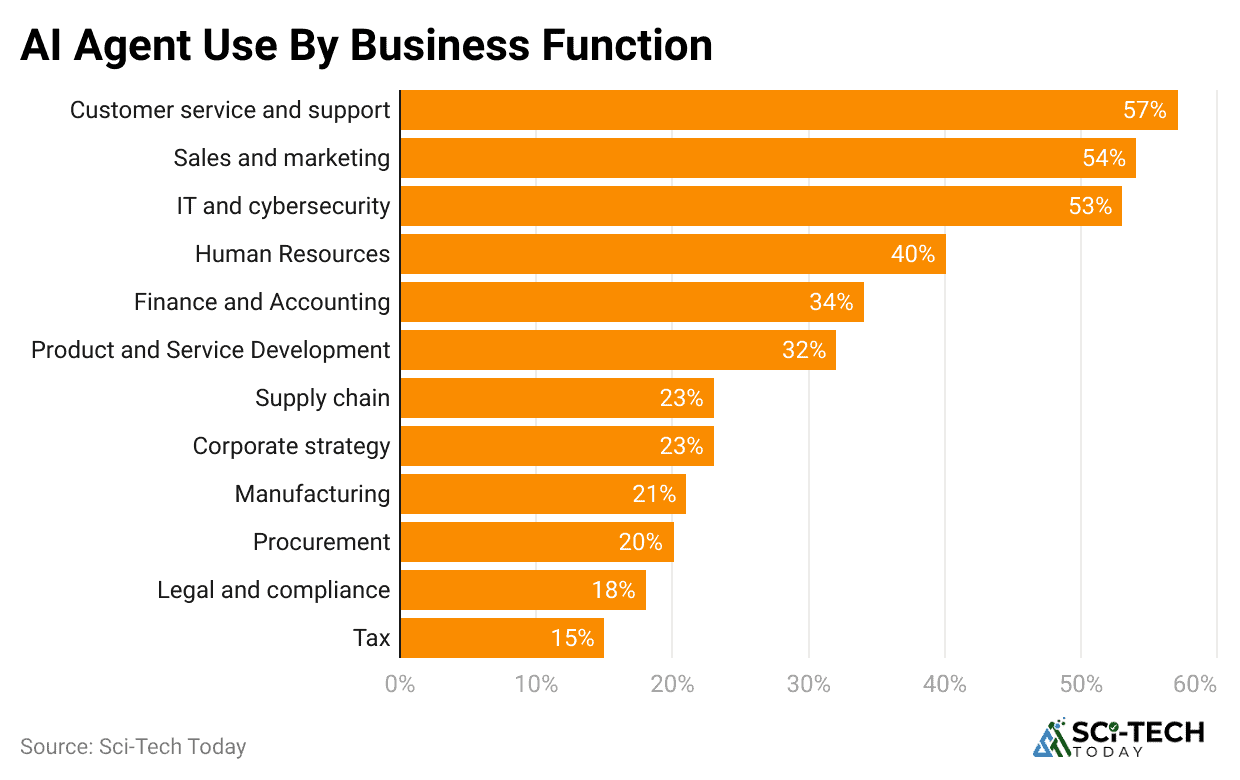
Sector-Specific Adoption and Impact Figures
#1. Financial Services: Security and Speed
- A critical application for AI Agents in finance is stopping criminal activity. Financial institutions utilizing AI for transaction monitoring report that they have improved their fraudulent transaction detection rates by a significant 40%.
- Studies show that the use of specialized AI Agents reduces fraud by an average of 25%, while simultaneously improving customer satisfaction scores by an identical 25%, demonstrating a dual win in security and experience.
- The financial services sector is projected to account for a massive 20% of the global increase in AI spending between 2024 and 2028, underscoring its commitment to embedding AI Agents deeply into its operational DNA.
#2. Healthcare: Saving Lives and Money
- AI Agents acting as virtual nurses and assistants can autonomously handle up to 95% of all routine patient inquiries, freeing up scarce human medical professionals for complex care.
- AI is projected to save the global healthcare industry up to a monumental $150 billion annually by 2026, primarily through the reduction of human error and the enhancement of administrative efficiency.
- Across the European Union, a significant 42% of hospitals and clinics are already leveraging AI Agents for tasks like disease diagnosis, with a further 19% planning implementation within the next three years.
#3. Retail & E-commerce: Personalization and Sales
- Over 63% of retailers are now actively using AI Agents for critical tasks like personalized marketing, dynamic inventory tracking, and round-the-clock customer support, highlighting its essential role in the modern shopping experience.
- In the e-commerce space, a substantial 65% of all customer interactions can now be successfully managed end-to-end by AI-powered chatbots and virtual assistants, significantly reducing the labor cost per interaction.
- The implementation of AI-driven personalization algorithms in the retail sector has been statistically linked to a lift in customer retention rates by an average of 30%, directly impacting lifetime customer value.
#4. Manufacturing and Logistics: Efficiency and Maintenance
- The deployment of AI-powered automation solutions in manufacturing has led to a demonstrable average productivity increase of 25%, a major competitive advantage in a high-volume, low-margin industry.
- AI Agents used for predictive maintenance, forecasting equipment failure before it occurs, have successfully reduced manufacturing downtime by 50% in early-adopting companies, translating to millions in annual savings.
- A full 70% of manufacturers report that they are integrating the use of AI Agents as a key component of their “overall digital transformation strategy,” showing a top-level commitment to agentic technology.
| Financial Services | Fraud Detection & Risk Management | 40% improvement in fraudulent transaction detection. |
| Healthcare | Routine Patient Inquiries & Diagnostics | 95% of routine patient inquiries can be handled by agents. |
| Retail & E-commerce | Personalization & Inventory Tracking | 30% increase in customer retention rates due to AI-driven personalization. |
| Manufacturing | Predictive Maintenance & Supply Chain | 50% reduction in equipment downtime. |
AI Agents in Customer Service Statistics
- According to S&S Insider, the global AI agents market was valued at $3.7 billion in 2023 and is expected to reach $103.6 billion by 2032, showing a strong annual growth rate of 44.9% between 2024 and 2032.
- PwC reports that 63% of leading companies are planning to increase their cloud spending by at least 6%, reflecting the growing reliance on AI-driven cloud solutions.
- Wiz states that 85% of enterprises are already using some form of artificial intelligence in 2025, showing how widely AI tools have become part of business operations.
- Gartner projects that by 2025, around 80% of companies will have adopted or plan to adopt AI-powered chatbots to handle customer service tasks and reduce response times.
- McKinsey highlights that as of early 2025, about 78% of organizations are using AI in at least one business area, up from 72% in 2024, indicating continuous growth in adoption across industries.
- McKinsey’s data also shows that AI adoption has climbed from 55% to 78% within two years, proving a rapid and consistent rise in usage across global enterprises.
- According to Accenture, the number of companies running fully AI-driven operations increased from 9% in 2023 to 16% in 2024, and these firms achieved 2.4 times higher productivity along with better employee retention.
- Gartner estimates that by 2029, AI agents will be able to resolve up to 80% of routine customer service issues autonomously, reducing the need for human involvement in most basic interactions.
- Capgemini notes that 63% of retail companies are already using generative AI to improve the quality and responsiveness of their customer support systems.
- Weka reports that organizations are using AI not only for efficiency but also for growth—42% aim to enhance product or service quality, 39% seek to boost revenue, 40% focus on improving workforce productivity, 41% target IT efficiency, and 39% aim to accelerate innovation.
AI Agent ROI and Cost Efficiency Statistics
- According to Nielsen Norman Group, customer support teams using AI tools can handle 13.8% more customer inquiries per hour, which helps companies boost efficiency without hiring extra staff.
- As per McKinsey, generative AI and similar technologies have the potential to automate 60–70% of employees’ routine tasks, allowing human workers to focus on higher-value activities and innovation.
- Research published by ResearchGate indicates that AI-driven customer service solutions have increased customer satisfaction scores by 31.5% and customer retention by 24.8%, proving measurable gains in experience and loyalty.
- Based on Deloitte’s findings, companies using generative AI are 35% less likely to report that their human agents feel stressed or overloaded during customer calls, showing better workload balance.
- According to Salesforce, nearly 9 out of 10 organizations using AI tools report significant savings in both time and money, with most service professionals believing that generative AI will enhance customer support quality.
- Another Deloitte study shows that firms with omnichannel AI integration tools experience a 9% lower cost per assisted contact, directly improving cost efficiency in service operations.
- Data trends from 2017 to 2024 show that AI adoption grew steadily for several years before surging sharply in 2024, as organizations recognized its proven return on investment and operational impact.
AI Agents + Human Agents
- According to Salesforce, 71% of customers think it is essential for a human to check and confirm what AI produces. This shows that people still trust human judgment, especially when decisions affect them directly.
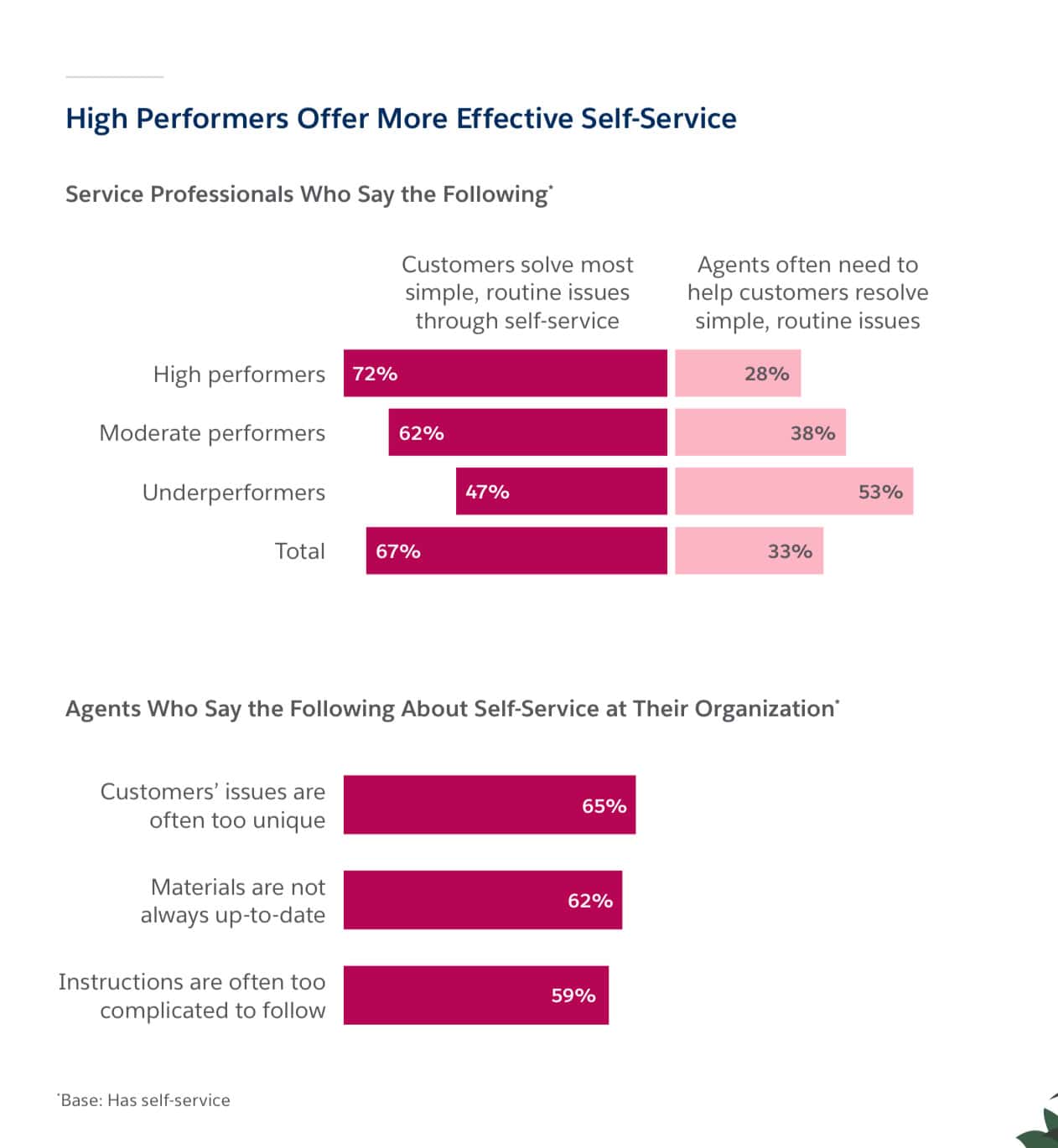
(Source: plivo.com)
- The same Salesforce report found that 54% of workers worldwide now trust humans and AI to work together on most tasks. This highlights that cooperation between technology and people is becoming a normal part of work life.
- As reported by McKinsey, 27% of organizations using generative AI ensure that employees review all AI-created outputs before they are used. This includes chatbot replies, written text, or digital images, emphasizing the importance of human oversight in maintaining quality and accuracy.
- Ipsos data shows that 68% of people have used automated customer service systems, yet 88% still prefer talking with a human when they need help. This underlines how emotional understanding and empathy remain key to effective customer support.
- According to IBM, 87% of executives believe generative AI will enhance jobs rather than eliminate them. This means most leaders see AI as a supportive tool that improves human performance rather than a replacement.
- IBM also noted that when company leaders explain that AI adoption is about adding value instead of cutting costs, employees respond more positively. Organizations that promote open experimentation without fear of failure see a 10% increase in revenue growth, and AI users with such a culture achieve a 22% higher growth rate than others.
AI Agents and Customer Preferences Statistics
- According to BCG, around 28% of consumers have already used AI-powered visual search to find products similar to what they want to buy.
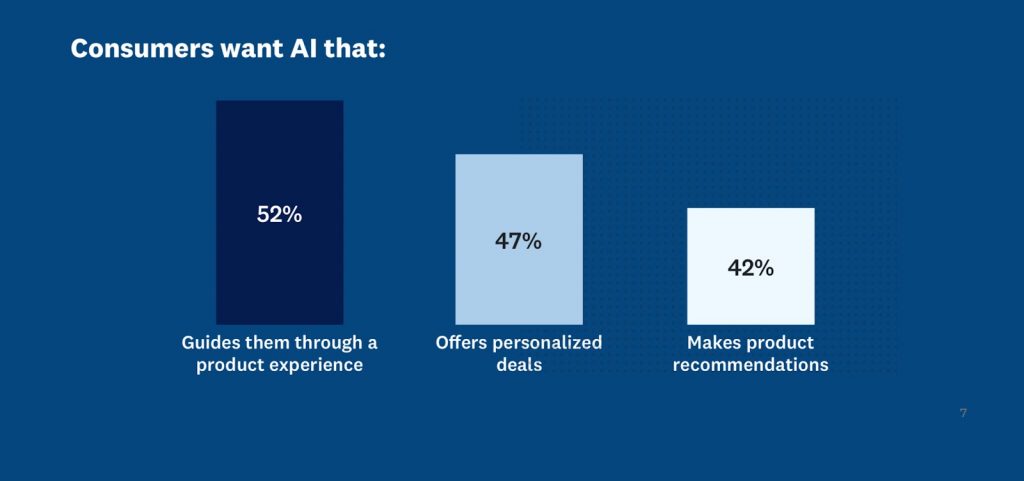
(Source: plivo.com)
- As per Salesforce, nearly 24% of shoppers feel comfortable letting AI agents make purchases for them, and this share increases to 32% among Gen Z users.
- Research from Salesforce also shows that one in three consumers prefer purchasing through automated or digital channels, like AI agents, instead of speaking with a human representative.
- Based on SurveyMonkey data, the main reasons people choose AI interactions include better availability (41%), faster problem-solving (37%), and more accurate answers (30%).
- SurveyMonkey further reports that 52% of users are interested in AI support that helps them navigate a website or product, while 47% want AI to offer personalized deals and 42% like AI-driven product suggestions.
- Salesforce findings reveal that 89% of customers consider it important to know if they are communicating with a human or an AI system, showing that transparency remains a key factor in customer trust.
Consumer Adoption of AI Agents in Online Shopping
- Around 70% of consumers said they would trust AI agents to book their flights, highlighting growing comfort with AI-driven travel planning.
- Nearly 65% of respondents expressed willingness to use AI for booking hotels and resorts, citing convenience and personalization.
- About 59% of shoppers are open to using AI agents for consumer electronics, where comparison and product recommendations are key.
- Approximately 56% showed interest in buying beauty products through AI, valuing tailored suggestions based on skin type and preferences.
- Around 53% of consumers are likely to purchase clothing using AI tools that offer virtual fitting or personalized style curation.
- Nearly 51% of respondents trust AI agents for over-the-counter remedies, reflecting confidence in AI-guided product accuracy.
- For regular groceries, 45% of consumers prefer AI assistance, primarily for faster list management and reordering.
- Similarly, 45% are interested in using AI to purchase snacks, showing growing comfort with everyday automation in shopping.
AI Agents in eCommerce Statistics
- The global market for AI-powered eCommerce is projected to be worth $8.65 billion in 2025, as businesses increasingly use AI to improve customer service, streamline operations, and boost efficiency.
- Around 80% of online and retail companies are already using AI chatbots or have plans to introduce them in the near future to enhance customer interaction.
- Nearly 74% of shoppers believe that artificial intelligence improves their overall shopping experience, while 6% feel it worsens it, and 21% notice no difference.
- The use of AI in supply chain management is anticipated to expand significantly, reaching a market value of $11.73 billion by 2025 due to its ability to improve forecasting and inventory efficiency.
- About 71% of consumers express frustration when their shopping experience lacks personalization, showing the growing importance of customized online interactions.
- Approximately 91% of buyers are more likely to purchase from brands that provide tailored discounts and product recommendations.
- Around 44% of CEOs identify data security and privacy as their top challenges in adopting AI, and 53% of managers and employees share this concern, reflecting ongoing trust and compliance issues in digital transformation.
AI Agents in Finance Statistics
- According to IDC, between 2024 and 2028, financial services are expected to account for 20% of the global rise in AI spending, which is projected to reach $632 billion worldwide.
- Data analytics has become the most common AI-driven application in financial institutions, with 69% of respondents using AI for this purpose.
- Around 57% of financial service providers use AI for data processing tasks, showing the growing reliance on automation for managing complex information.
- AI is also applied in natural language processing by 47% of institutions, helping them improve communication, fraud detection, and customer engagement.
- Large language models are used by about 46% of respondents, demonstrating increasing trust in generative AI tools for risk analysis and decision support.
- In the United States, 62% of banks stated that dealing with personal data for training AI agents presents major challenges, as the risks and complexity often outweigh potential improvements in customer service.
- In Asia, 37% of banks identified legal responsibility arising from AI decisions as a key concern, compared with the global survey average of 32%, highlighting regional caution about AI accountability.
Consumer Adoption and The Human Element
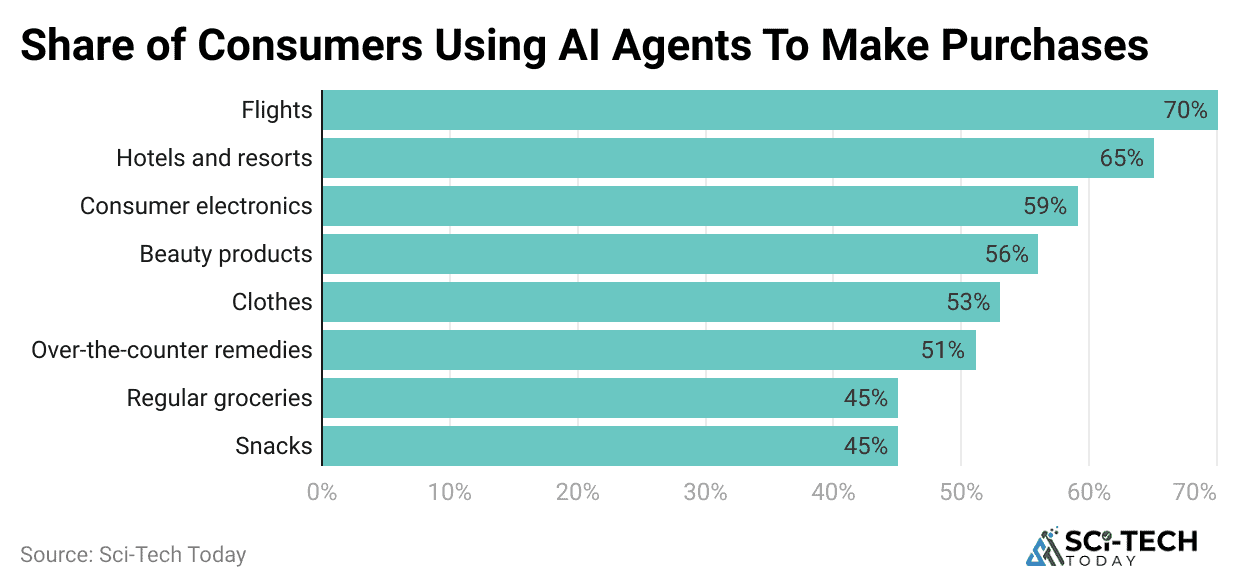
- A large segment of the population, specifically 51% of consumers, now explicitly state they prefer interacting with an AI Agent over a human representative when they are seeking immediate service.
- This preference is driven by the guaranteed 24/7 availability and demonstrably faster response times of AI.
- The level of trust in autonomous agents is rapidly increasing. A significant 39% of consumers report being comfortable with the idea of an AI Agent scheduling appointments for them, a task that requires a high degree of confidence in the agent’s accuracy and calendar awareness.
- Consumers are also comfortable with AI-driven content, with 37% already comfortable with an AI Agent creating more personalized or useful content for them.
- This figure is even higher among the Gen Z demographic, reaching 44%, suggesting a generational shift in digital expectations.
- In the established consumer market for virtual assistants, the precursors to modern AI Agents, adoption rates are high.
- The leading platforms are Google Assistant (used by 39% of consumers), Amazon’s Alexa (at 36%), and Apple’s Siri (with a 29% usage rate), showing high penetration across smart devices.
- The quality of interaction with advanced AI Agents is becoming so sophisticated that approximately 48% of customers reported that it is becoming increasingly difficult for them to tell the difference between an AI service representative and a human agent.
| Preference over Humans (for Speed) | 51% of consumers prefer agents for immediate service. |
| Trust in Scheduling | 39% of consumers are comfortable with agents scheduling appointments. |
| Personalization Comfort (Gen Z) | 44% of Gen Z consumers are comfortable with agents creating personalized content. |
| Difficulty Identifying AI | 48% of customers find it harder to distinguish between AI and human reps. |
AI Agents in Fortune 500 Companies
- According to recent industry data, AI agents are now a major part of operations in Fortune 500 companies, especially for customer support and product recommendations. These AI systems manage repetitive work, respond faster, and offer more personalized service to users.
- Adoption has been slower in fields that need human judgment, such as creative planning and strategy. Companies still rely on people for these areas because AI tools cannot easily replace human thinking or intuition.
- Many organizations remain cautious because of concerns about data privacy, ethics, and the reliability of AI models. These worries have made companies more selective about where they apply AI automation.
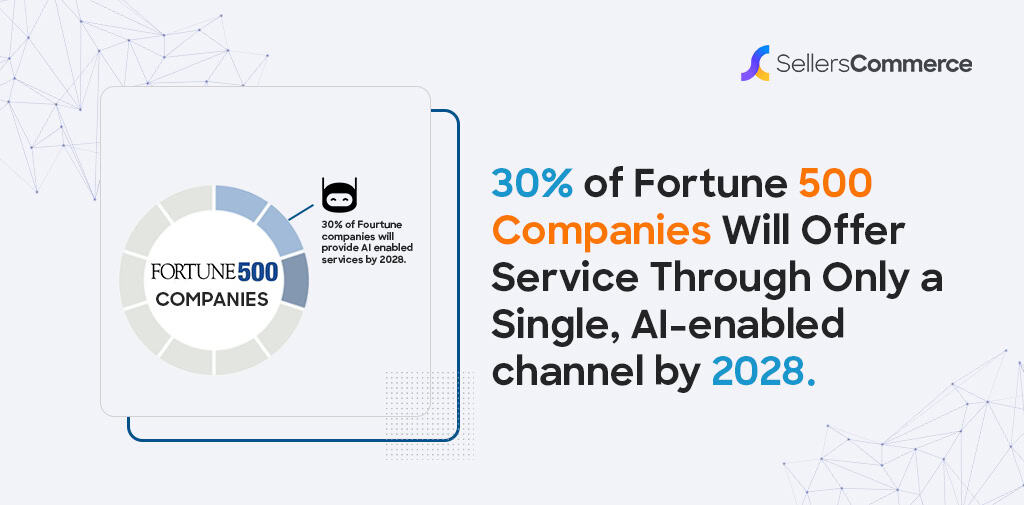
(Source: sellerscommerce.com)
- It is observed that around 30% of Fortune 500 companies are expected to deliver services through a single AI-powered channel by 2028, showing a strong shift toward automation and digital customer engagement.
- Approximately 40% of Fortune 500 companies are currently using CrewAI’s agents, highlighting the growing trust in specialized AI platforms to enhance workforce efficiency and reduce response time.
- A total of 281 Fortune 500 companies have listed AI as a business risk, representing 56.2% of the total, which is a sharp 473.5% rise from the previous year when only 49 companies expressed such concerns. This increase reflects how AI has moved from a support tool to a critical factor in corporate risk assessment.
- Kroger’s CEO Rodney McMullen stated that AI-driven models have helped cut checkout times by 50%. By using digital twin technology that mirrors store layouts, AI optimizes checkout lines and helps fill 18,000 job vacancies caused by labor shortages.
- Bank of America’s CEO Brian Moynihan shared that their AI assistant “Erica” has handled over 2 billion customer interactions, providing banking assistance through voice and chat interfaces while improving customer satisfaction and operational efficiency.
- Overall, it can be concluded that Fortune 500 companies are actively integrating AI agents, but their full potential is still being explored as they balance automation with human oversight and ethical considerations.
Conclusion
Overall, these data are conclusive: the era of the AI Agent is a present-day reality that is already driving economic growth and changing productivity. We are seeing a market growing at a rate of nearly 46% CAGR, made by massive enterprise adoption, where 85% of businesses are making the move by the end of 2025.
The financial proof is undeniable, with an average overall efficiency boost of 55% and a cost reduction of 35% for companies that deploy these systems. From the 40% improvement in fraud detection in finance to the 95% automation of routine patient inquiries in healthcare, the impact is measurable, sector-specific, and massive. So, if these statistics don’t grab your attention, nothing will. The best time to start building your custom, data-driven AI Agents is right now, so try to give it a shot. I hope you like this piece of content, if you found it useful share it with your friends. Thanks for staying up till the end.
FAQ.
The global AI Agents market is in a period of hyper-growth. Estimates consistently project a Compound Annual Growth Rate (CAGR) of around 44% to 46% over the next few years. This means the market, valued in the billions today, is expected to grow to over $50 billion by 2030.
North America currently holds the largest market share. This is primarily attributed to its highly developed tech infrastructure, the presence of major tech companies pioneering AI agent development, and the early adoption of AI solutions across critical sectors like finance, healthcare, and software development.
The primary driver is the increasing demand for autonomous, goal-oriented automation. Unlike traditional automation, AI agents offer the capability to reason, plan, and execute complex, multi-step goals without requiring continuous human prompting.
Adoption is accelerating quickly. Surveys indicate that a significant majority, often over 80% of corporate executives, are either actively exploring or already scaling agent-led workflows within their operations.
Studies suggest substantial gains. Companies using AI agents have reported an increase in productivity that can range from 20% to over 50% in specific workflows. For highly technical areas like software development, some reports indicate that AI agents can help complete programming tasks up to 126% faster.
There is a strong preference for a Human-in-the-Loop model. A notable percentage of companies (e.g., 29%) require specific oversight mechanisms, such as human review gates or detailed audit logs, before an agent can perform critical or high-stakes actions. Furthermore, a large majority of end-users (71%) prefer that AI-generated content or actions be reviewed by a human before being finalized.
The most popular applications are in areas requiring complex decision-making or multi-step action. These include:
- Customer Service & Virtual Assistants: Automating the resolution of complex, routine customer issues.
- Software Development: Assisting with code generation, bug detection, and deployment optimization.
- Business Intelligence & Finance: Providing predictive analytics, automated reporting, and real-time fraud monitoring.
The primary challenges include:
- Data Privacy and Security: Managing access to sensitive data as agents integrate with more enterprise systems.
- Governance and Compliance: Establishing clear rules and processes to ensure reliable and ethical outcomes.
- Talent Gap: The lack of a sufficiently skilled workforce trained to deploy, manage, and optimize the new agentic AI technology.
The key differentiator is their level of autonomy and proactivity:
- AI Chatbots are the most basic. They are reactive and follow a fixed script or set of rules to answer frequently asked questions or handle simple, structured queries.
- AI Assistants (like the underlying technology in many modern conversational tools) are also reactive. They use LLMs to understand complex natural language and perform tasks when prompted by the user (e.g., “Summarize this document”). They are digital helpers.
- AI Agents are proactive and autonomous. They are given a high-level goal (e.g., “Plan and book a business trip”) and use reasoning, planning, and tools to break down the task into sub-steps, executing them independently and adapting as needed without continuous human input.

Barry is a technology enthusiast with a passion for in-depth research on various technological topics. He meticulously gathers comprehensive statistics and facts to assist users. Barry's primary interest lies in understanding the intricacies of software and creating content that highlights its value. When not evaluating applications or programs, Barry enjoys experimenting with new healthy recipes, practicing yoga, meditating, or taking nature walks with his child.
